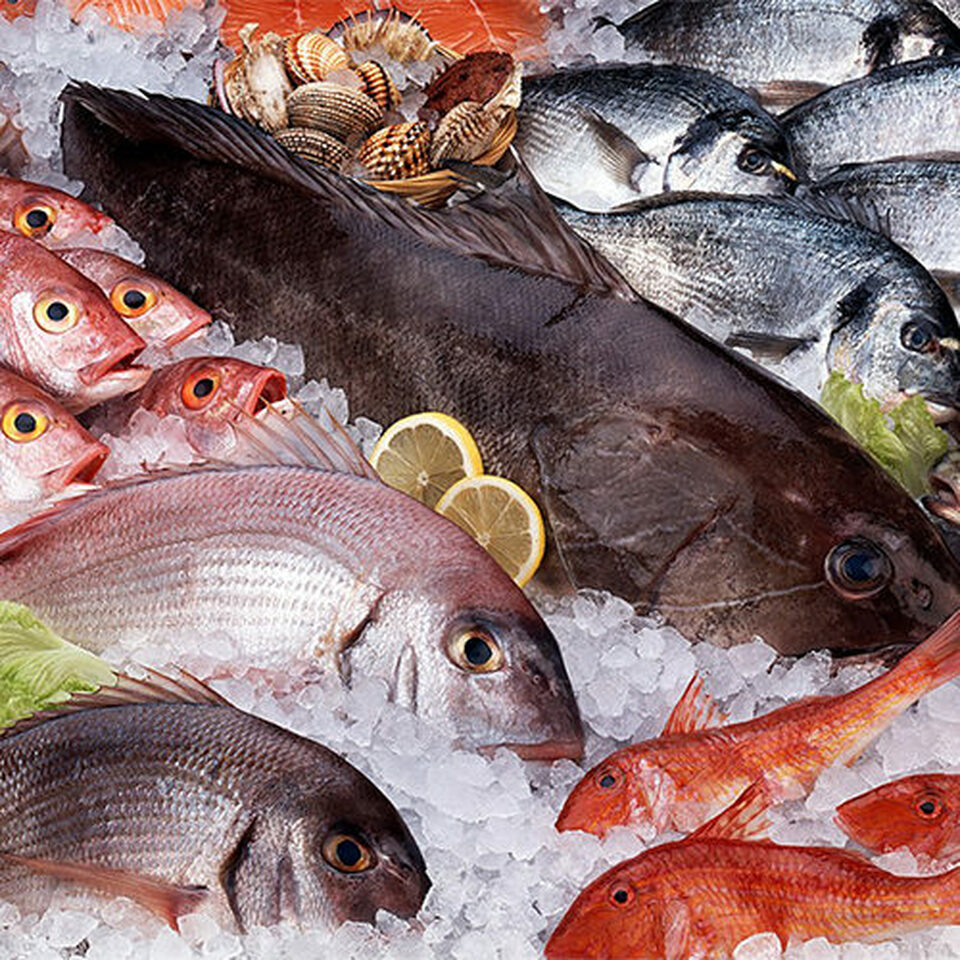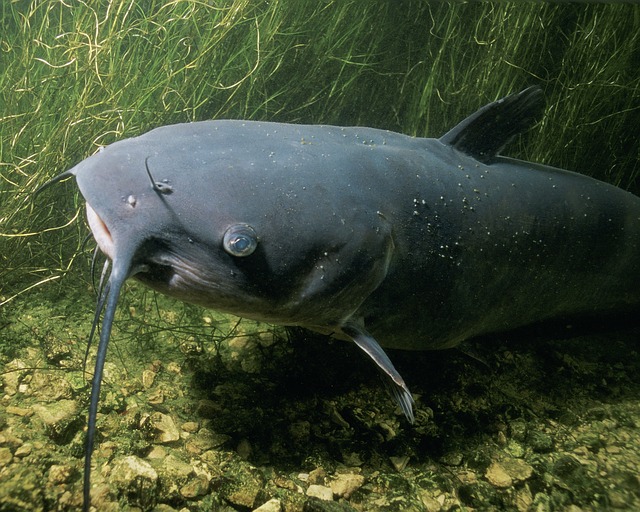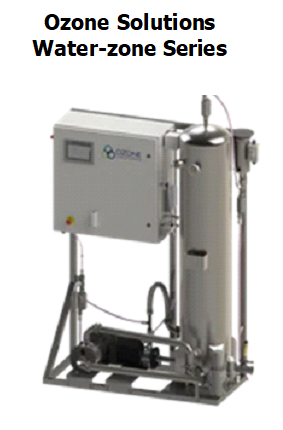Ozone in Seafood Processing

Ozone use in seafood processing applications has proven to be a great tool in the quest for food safety as it has in many other food processing industries. There are more potential uses for ozone in the commercial seafood industry than many agricultural food based industries. Not only is ozone useful for food safety; but also for fish growing (aquaculture), storage, ozonated ice and even odor control during processing.
Traditional methods for sanitation in the seafood industry have been a wide use of chlorine dissolved in rinse and wash waters. Chlorine has been the most widely used sanitizer in the seafood industry despite the limited effect it has on killing bacteria on seafood surfaces (Augusto Goncalves). Due to the potential off flavor and negative health effects of chlorine by-products, improved sanitation methods have been sought. Since the acceptance of ozone use in food production and the GRAS approval granted in 2001, many uses for ozone have been researched and implemented in the commercial seafood processing industries.
Ozone use in seafood processing has shown benefits in the following areas:
Aquaculture and Commercial Fish Growing Facilities
As the population of the world grows commercially, grown seafood has become more necessary to supplement wild seafood harvested from the ocean and lakes. Ozone use in aquaculture has proven effective at lowering water consumption by increasing water re-use, lowering diseases in hatcheries and growing ponds (some applications in seafood), and maintaining clean water for faster growth rates with lower feed rates (Blogoslawki et al). Learn more about ozone in Aquaculture
Storage of Live Seafood
In some commercial applications fish or other seafood is transported and stored live prior to processing. In these applications ozone can be used within this storage water to reduce bacteria and virus cross-contamination and therefore lowering the bacteria plants entering the processing center.
Ozonated Ice and Fresh Fish Storage

Ozone can be dissolved into water that is then frozen in ice production. This process will essentially store the ozone within the ice creating what is commonly referred to as ozonated ice. This ozonated ice can be used in the storage of fish to prolong shelf-life and maintain a fresher, better looking product to the end user.
Much of the fish that we consume is harvested in the ocean by large fishing vessels that may stay out at sea for weeks at a time. To maintain high quality fish products for market, ozonated ice is commonly used on these vessels for the fish that are harvested early in the voyage and stored. Ozonated ice has gained popularity in seafood storage for many land based operations and fish farms.
Read more about
Ozonated Ice and Fish Storage.
Antimicrobial Intervention in Fillet Machines and Cut Fillets
After ozone was granted GRAS approval by both the USDA and FDA for direct contact with food, interest in antimicrobial intervention directly on food products has dominated the discussions of ozone use in food processing. Fish and seafood processing has not been immune from this shift. Ozone can be dissolved into water to provide an aqueous ozone solution that is stable, safe and easy to control. This water containing ozone can replace chlorine as an antimicrobial agent, or be used to supplement existing water rinses and achieve improved antimicrobial intervention.
- Aqueous ozone used for processing of dressed whole fish showed a reduction of bacterial cell counts of <5,000 without ozone to <932 with ozone, and a reduction of <5,000 without ozone to <120 with ozone on fillets.
- When fillets were cut from the whole ozonated fish they resulted in low cell counts of 120-190. In this cutting of the whole ozonated fish, no ozonated spray was done on the fillet machines, or ozonated pretreatment, or ozonated ice for packing was done. Fillets without ozone treatment (but with conventional treatment) ranged from 7,500 – 5,000 cell count (Sopher et al).
- Catfish fillets produced from implementing aqueous ozone spraying on the fillet machine showed a reduction in total plate counts of 14,906 – 2,975 (Sopher et al).
Surface Sanitation of Processing Equipment, Tables, etc.
Ozone dissolved into water can be used throughout a seafood processing plant for surface sanitation. This is a common application to sanitize fillet machines, cutting tables, knives and all equipment that may be used in the seafood processing areas.
Ozone is used throughout the food processing industry for surface sanitation of shipment. This application is certainly not limited to the seafood industry.
See our
Surface Sanitation with Ozone page to learn more about this application
Odor Control in Offal Rooms and Other Processing Areas
Seafood processing can create foul odors in certain processes. The offal processing can create a foul odor that is less than ideal for the employees working within that specific room. In some applications seafood is dried to create a final product. The drying process releases the moisture and odor to the outdoors. Foul odors from this process or other processes can cause potential odor issues surrounding a seafood processing plant, causing complaints from neighbors in the community. Ozone is commonly used in industrial odor control for many applications. There are a variety of methods to implement ozone safely. The main goal being to maintain worker safety, while improving indoor and outdoor air quality.
Read our specific odor control page:
Industrial Odor Control
For more technical information on the use of ozone and seafood processing review the technical papers below. Each of these papers is available for purchase from the publisher.
Research Paper Abstracts
Ozone, An Emerging Technology for the Seafood Industry
Authors: Augusto Goncalves, Alex. Brazilian Archives of Biology and Technology 52. 6 Nov, 2009. 1527-39. Read the full paper
Abstract
In recent years, increasing attention has been focused on the safety of foods and in particular on the intervention methods to reduce and eliminate human pathogens from fresh product, especially fresh seafood. Traditional technology utilizes water with or without a sanitizing agent to wash fresh seafood. Chlorine is the most widely used sanitizing agent available for fresh product, but it has a limited effect in killing bacteria on seafood surfaces. An alternative treatment is being sought to improve food safety. Many research and industrial trials are underway to validate the use of ozone in the food industry. This article intends to show a clean technology to be applied in seafood industry and to show that many studies must be done to demonstrate the best concentrations and the best methods of ozone applications in diverse seafood species, so that the governments of all the countries can approve their application in the fishing industry.
Some Ozone Applications in Seafood
Authors: Blogoslawski, Walter J., and Mary E. Stewart. Ozone: Science & Engineering: The Journal of the International Ozone Association 33 (2011): 368-373. Find More Information
Abstract
The use of ozonized seawater to reduce and eliminate bacterial pathogens in mariculture facilities and to extend shelf life of marine food products is demonstrated. Consequent benefits of this treatment are also discussed. Laboratory and pilot experiments were conducted using ozone gas to reduce disease-producing Vibrio sp. bacteria at a shrimp (Litopenaeus vannameii) hatchery in Ecuador, South America. Pacific Ocean seawater was treated in a 1,540 L capacity fiberglass contact tower (5-7 min retention) with an ozone oxidant residual of 0.07 mg/L. Prior to ozone treatment, Vibrio determined by TCBS plating was too numerous to count, causing shrimp to die of disease (30 tanks of 13,000 L each). After treatment, Vibrio counts and shrimp disease were eliminated, ozonized seawater decreased the time required for normal molting of shrimp and the total growth cycle was reduced by three days versus control water. From June 1991 until September 1992, survival rates of larval shrimp were robust, routine antibiotic addition was reduced, and one additional growth cycle was realized. Ozonized ice (fresh water) was prepared in the Milford Laboratory CT, USA; Gloucester Food Tech Lab, MA, USA; and a field station (brine water) for sockeye salmon (Oncorhynchus nerka) in Homer, AK, USA. In these studies, squid (Loligo pealei) and commercially captured salmon demonstrated a reduction in spoilage and extension of shelf life of 3 to 5 days' time using ozonized ice. Bacteria associated with commercial ice-producing machines were reduced by 4 logs using ozone treatment. In addition, no flavor aberration was noted using ozonized ice.
Evaluation of an Ozone-Slurry Ice Combined Refrigeration System for the Storage of Farmed Turbot (Psetta Maxima)
Authors: Camposa, Carmen A., Vanesa Losada, Oscar Rodriguez, Santiago P. Aubourg, and Jorge Barros-Velazquez. Food Chemistry 97.2 July (2006): 223-30. Find More Information

Abstract
The use of ozonized slurry ice was investigated as a new refrigeration system for the storage of farmed turbot (Psetta maxima). With this purpose in mind, an ozone generator device was coupled to a slurry ice system working subzero at -1.5° C. The ozone concentration was adjusted to a redox potential of 700 mV, and the slurry ice biphasic mixture was prepared at a 40% ice/60% water ratio and 3.3% salinity. Certain biochemical parameters indicative of fish freshness, such as the rate of nucleotide degradation or TMA-N formation, were not significantly affected by the presence of ozone in the slurry ice mixture. However, storage in ozonized slurry ice significantly slowed down the mechanisms responsible for lipid hydrolysis and lipid oxidation in farmed turbot. Storage in ozonized slurry ice also led to significantly (p < 0.05) lower counts of both total aerobes and psychrotrophic bacteria in both turbot muscle and skin, as compared with the control batch stored without ozone. Sensory analyses confirmed an extended shelf life of turbot specimens stored in ozonized slurry ice; these maintaining "A" sensory quality up to day 14, while the counterpart batch stored in slurry ice kept this quality only up to day 7. The combination of ozone and slurry ice may be recommended for the chilling and storage of farmed turbot with a view to extending its shelf-life.
Ozone Efficacy as a Bactericide in Seafood Processing
Author: Crapo, Charles, Brian Himelbloom, Susan Vitt, and Leo Pedersen. Journal of Aquatic Food Product Technology 13.1 (2004): 111-23. Find More Information
Abstract
The efficacy of ozonated water (0.6-1.5 ppm) was evaluated as a bactericidal agent for sanitizing food contact surfaces and for treatment of raw seafood. The presence of ozone reduced the bacterial levels substantially on stainless steel surfaces and to a lesser extent on plastic cutting boards. Ozone was about as effective as chlorine in lowering levels of Listeria innocua on inoculated food contact surfaces. Fish processing residuals present on the surface greatly reduced sanitizer effectiveness. In high organic conditions, chlorinated water was slightly more effective than ozonated water. However, ozonated water applied to fish fillets and roe was not effective for bacterial control. The presence of organic material, particularly with fillets, reduced the effectiveness of ozone. Ozone accelerated the development of rancidity in frozen roe and fillets, resulting in reduced shelf life. We recommend ozone only as a sanitizer for cleaned seafood contact surfaces.
Extension of Fish Shelf Life by Ozone Treatment
Authors: Dehkordi, Behrouz Mosaye, and Neda Zokaie. World Academy of Science, Engineering & Technology 62 Feb. (2010): 150- Find More Information
Abstract
The shelf life of fish was extended using disinfection properties of ozone. For this purpose, trout specimens were exposed to ozone in the aqueous media for two hours and their microbial growth and biochemical properties were measured over time. Microbial growth of ozone treated fish was significantly slower than control sample, resulting in lower counts of bacteria. According to the biochemical tests; ozone treatment had no negative effects on fat, protein and humidity of fish. Peroxide and TVN (Total Volatile Nitrogen) measurements showed that treatment by ozone increased the trout shelf life from 4 days to 6 days. According to the sensory analysis, no changes were observed in color or flavor of the ozone treated trout.
Ozone Applications in Catfish Processing
Authors: Sopher, Charles D., George T. Battles, and Edward A. Knueve. Ozone: Science & Engineering: The Journal of the International Ozone Association 29.3 (2007): 221-28. Find More Information

Abstract
TVA, EPRI, Global Energy Partners, LLC, ClearWater Tech, LLC and Superior Catfish Products (Macon, Mississippi) partnered to conduct research and demonstrate beneficial effects of applying gaseous and aqueous ozone in catfish processing. Utilizing an HDO3-III skid mounted ozone unit manufactured by ClearWater Tech, LLC, various processing areas in the Superior Fish Products catfish processing plant were evaluated in August 2005 to determine if aqueous ozone could reduce the microbial load in the processing line and on the finished product. In the offal room, gaseous ozone was introduced to determine if odors could be reduced while catfish by-products were being loaded into trucks also located in the offal room. The utilization of aqueous ozone as a final rinse for processing equipment was also tested. All tests were replicated five times and a completely randomized design was used to statistically analyze resulting data. Standard Laboratories, Inc. of Starkville, MS was contracted to conduct all microbial analyses. It was found that aqueous ozone was very effective in significantly reducing microbial loads on live catfish entering the plant. Finished catfish fillets washed in ozonated water showed significant reductions in total plate counts. Ozonation at the fillet machine could be beneficial. Utilizing aqueous ozone as a final wash after using soap and a chlorine sanitizer was of no benefit and actually removed the residual chlorine and led to increased plate counts. Gaseous ozone reduced odors in the offal room rapidly and effectively. Utilization of ozone for odor reductions will require ozone monitoring equipment that ensures employee safety.

